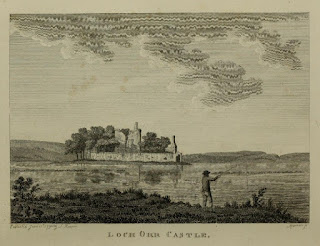When
I’m down in Newcastle, I like to zoom round to various places on the Metro and then
have a wander around them. On my latest
visit I decided to go to Wallsend, a town I don’t think I’ve visited since the
early 1970s, when I was just a wee sprog.
Since I was last there the remains of a Roman Fort have been uncovered,
so I headed off to that.
Segedunum
is the name of the Roman Fort, and it sits at the eastern end of Hadrian’s Wall
in Wallsend. And those of you with a
quick mind, unlike me, will realise that the town of Wallsend takes its name
from being at the walls end.
The
building of Hadrian’s Wall was started in AD 122, when the Roman Emperor,
Hadrian came to inspect one of the far flung lands of his empire. While he was here, it was decided that a wall
should be built to protect the Romans from the Barbarians in the North. So, those nifty little Romans built a great
big wall that ran from Wallsend to Bowness-on-Solway in Cumbria. A wall that was around 73 miles (117.5
kilometres) long, or 80 Roman miles long, their measurement of a mile being
slightly shorter than ours.
The
fort at Segedunum was built at around the time the wall was being constructed,
and was in use for around three hundred years, up until around 400 AD. It sat
on a plateau overlooking the River Tyne with a commanding view of a mile or
two, up and down the river. Within the
fort there were barracks for the infantry and cavalry, a headquarters building,
a house for the commanding officer, a hospital, and various other buildings. A high defensive parapet wall surrounded the
fort with a walkway running around it.
There were also several observational towers along the wall to keep an
eye out for any of those pesky barbarians.
Outside
the fort, evidence has been found that there was a large village along with a
temple complex and a bathhouse. The
village stretched all the way down to the river where it is likely there would
have been some sort of harbour. In the
village dwelled various craftsmen and tradesman from local areas and further
afield, who made their living trading with the soldiers based in the fort.
In
AD 409, Britain was basically dumped by Emperor Honorius, who had bigger
problems to deal with as the Roman Empire began to collapse around him. It appears that the fort was abandoned at
some point around then, and much of the stone from it was taken away to be used
for other buildings.
The
fort and the area around it then became farmland for many years, before Wallsend
Colliery was established nearby, and housing was built over where the fort had
stood. Excavations were carried out on
the site at various times and then in the 1990s a major project was undertaken
to turn it into a visitor attraction.
Now, sitting by the fort there is a museum with a viewing tower that overlooks
the site, and opposite that a reconstruction of a Roman bath house.
While
wandering around the museum, I introduced my Skulferatu to one of the exhibits
there, a replica skull grinning out at the visitors. The replica was of a skull found with a
healing sword wound in it. Hmm, that
must have hurt.
After
walking around the remains and outlines of the fort at Segedunum, I left the
Skulferatu that had accompanied me in amongst the stones marking the cavalry
barracks.
The
coordinates for the location of the Skulferatu are -
Longitude
-1.532107
I
used the following sources for information on Segedunum –
































